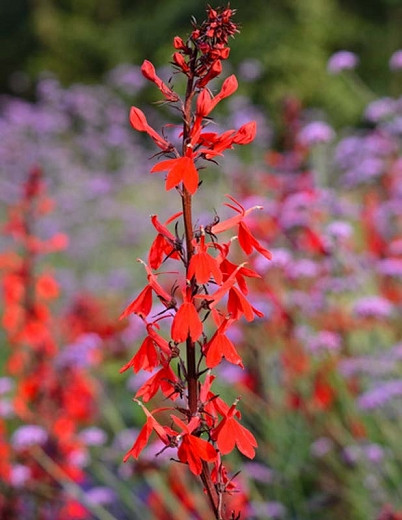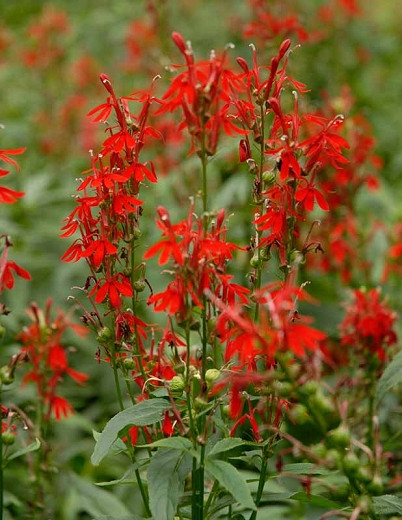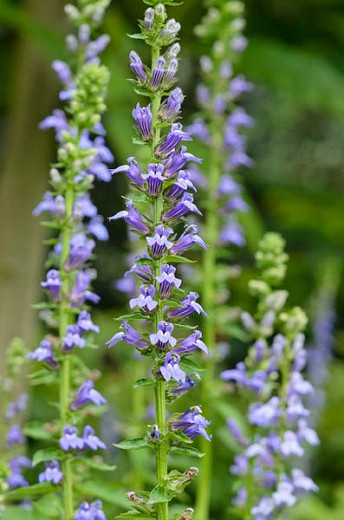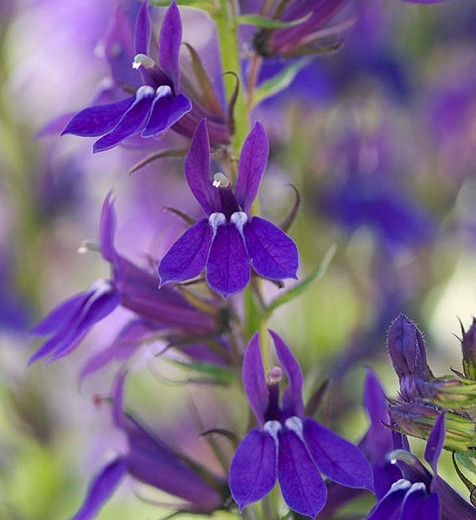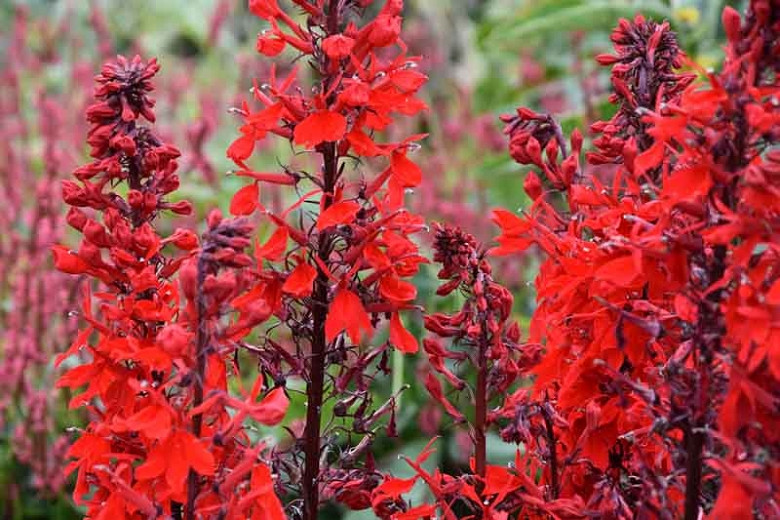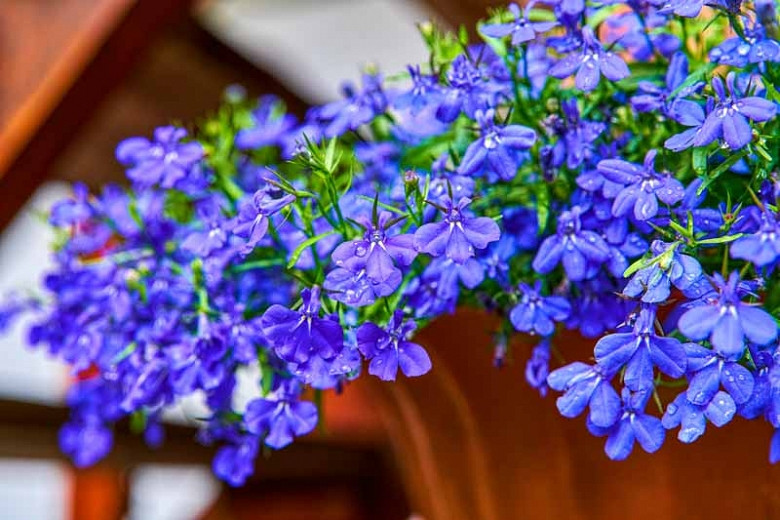Lobelia cardinalis (Cardinal Flower)
A top performer that is perfect for the late summer garden, Lobelia cardinalis (Cardinal Flower) is a popular, upright, clump-forming perennial boasting a profusion of flower spikes densely packed with brilliant, cardinal red, two-lipped blossoms, 2 in. long (5 cm), from midsummer to early fall.
A top performer that is perfect for the late summer garden, Lobelia cardinalis (Cardinal Flower) is a popular, upright, clump-forming perennial boasting a profusion of flower spikes densely packed with brilliant, cardinal red, two-lipped blossoms, 2 in. long (5 cm), from midsummer to early fall. Borne on erect, alternate-leafed stalks rising above a rosette of lance-shaped, glossy bright green leaves, this architectural plant adds vertical interest to the landscape. Extremely hardy, low care, and fairly pest and disease-free, Cardinal Flower tends to be short-lived, although it may self-seed in ideal growing conditions (without becoming invasive)!
- Winner of the prestigious Award of Garden Merit of the Royal Horticultural Society
- Grows up to 2-4 ft. tall (60-120 cm) and 1-2 ft. wide (30-60 cm).
- Performs best in rich, medium to wet soils in full sun to part shade. Appreciates some shade from hot afternoon sun and loves a lot of moisture. Tolerates damp soils and poor drainage. Can be grown in water to 3 in. deep (7 cm).
- A welcomed addition to beds and borders, wild gardens, butterfly gardens, cottage gardens, bog gardens, rain gardens and near ponds or streams.
- A magnet for hummingbirds, butterflies and beneficial insects, it is deer and rabbit resistant.
- Deadhead for a neat appearance, to encourage rebloom or prevent any undesired reseeding. Pinch back for bushier and more compact plants. Cut back after flowering. Divide plants every 2-3 years.
- Propagate by seed sown in gentle heat as soon as ripe, or by bud cuttings in late summer.
- Native to North America.
- Ingestion may cause discomfort.
- Toxic to dogs, toxic to cats, toxic to horses.
Requirements
| Hardiness | 3 – 9 |
|---|---|
| Heat Zones | 1 – 8 |
| Climate Zones | 1, 1A, 1B, 2, 2A, 2B, 3, 3A, 3B, 4, 5, 6, 7, 14, 15, 16, 17 |
| Plant Type | Perennials |
| Plant Family | Lobelia |
| Exposure | Full Sun, Partial Sun |
| Season of Interest | Summer (Mid,Late)Fall |
| Height | 2' – 4' (60cm – 120cm) |
| Spread | 1' – 2' (30cm – 60cm) |
| Spacing | 12″ – 24″ (30cm – 60cm) |
| Water Needs | High |
| Maintenance | Low |
| Soil Type | Loam |
| Soil pH | Acid, Alkaline, Neutral |
| Soil Drainage | Poorly Drained |
| Characteristics | Plant of Merit, Showy |
| Native Plants | United States, California, Midwest, Illinois, Indiana, Iowa, Kansas, Michigan, Minnesota, Missouri, Nebraska, Ohio, Wisconsin, Northeast, Connecticut, Delaware, Maine, Massachusetts, Maryland, New Hampshire, New Jersey, New York, Pennsylvania, Rhode Island, Vermont, Rocky Mountains, Colorado, Utah, Southeast, Alabama, Arkansas, Florida, Georgia, Kentucky, Louisiana, Mississippi, North Carolina, South Carolina, Tennessee, Virginia, West Virginia, Southwest, Nevada, Arizona, New Mexico, Oklahoma, Texas |
| Tolerance | Deer, Rabbit, Wet Soil |
| Attracts | Birds, Butterflies, Hummingbirds |
| Garden Uses | Beds and Borders, Bog Gardens, Ponds and Streams, Rain Gardens, Water Gardens |
| Garden Styles | Informal and Cottage, Traditional Garden |
